Types of insulation for the walls of the house from the inside: materials for insulation and their characteristics
From year to year, energy prices are growing inexorably, and the level of income of the population remains almost in place. Looking at the unbearable bills for heating a house or apartment, it comes to understanding that the problem needs to be solved on its own - insulation of residential premises.
For this purpose, various types of insulation can be used for the walls of the house inside and out.
Let's take a closer look at the possible options for materials for insulation, their advantages and disadvantages.
The content of the article:
The choice of insulation method
Wall insulation can be external and internal: the option with external insulation is more preferable and more effective. But there are situations when it is not possible to insulate the walls from the outside.
For example, the prohibition of the commission on architecture: the building is a monument of architecture, the appearance of which is not recommended to be changed. Or when an unheated working room is found behind a wall in which it is impossible to insulate the walls.
In such cases, the internal insulation of the walls with various types of insulation will be an ideal way out.
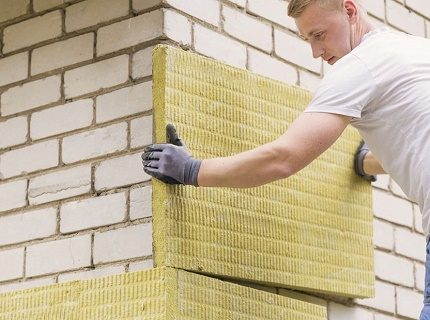
It is necessary with great responsibility to approach the issue of choosing a heater, study the characteristics of each type, and select them taking into account the building materials from which the walls of your house are made.
Incorrectly selected material will not help to achieve the desired goal and can only aggravate the situation for the worse. So, for example, after improper installation of the insulation, the wall not only does not keep heat, but freezes even more in winter than before.
In most cases, if the wall is not properly sealed after a certain period of time, condensation becomes dangerous for the insulation material and for the wall itself.
The material and the wall are saturated with moisture, as a result the insulation effect is reduced to zero, and the walls of the building begin to gradually collapse from infection with the fungus.
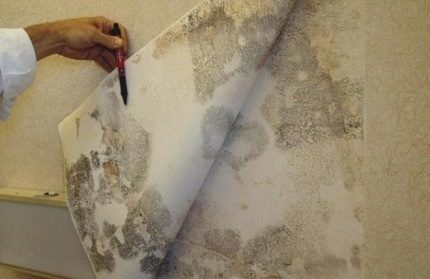
In order not to encounter these problems for many years after the repair and insulation of the surface, you must strictly adhere to the technical recommendations for installation.
Equally important is the correct sealing of the seams of the internal walls of the house, the joints between the insulation plates and the surface of the wall when it is attached.
Types of materials for internal thermal insulation
Among the many types of heaters that can be used for thermal insulation of the internal walls of the house, we will talk about the most popular and most popular options. Among which are fiberboard, glass wool, polystyrene, cork wallpaper, etc.
Let us dwell in more detail on each of them.
Option # 1 - fiberboard boards
Fiberboard the plate is an excellent material for performing wall insulation from the inside, cheap enough, you can say economy class.
SlabsFiberboard based on wastewood processingindustry, stick together with glue from natural resins when exposed to high temperatures and pressure.
The material is treated with antiseptic elements,not affected exposure to high temperatures and high humidity.
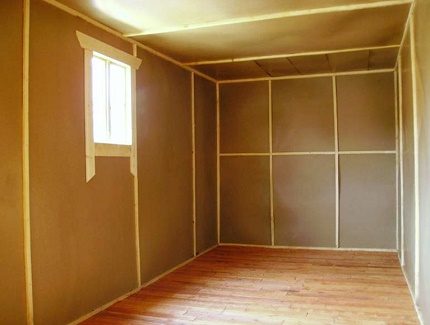
Option # 2 - withteklovata
Glass wool is the most common, budget-friendly material for wall insulation. As practice shows, there is a big drawback, because of which experts do not recommend using it from the inside of the walls.
It absorbs moisture very well, which reduces its heat-insulating properties - the material decreases in volume and size, which leads to significantheat loss.
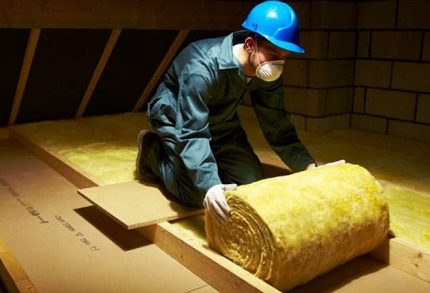
With external insulation, glass wool is laid between the wooden beams end-to-end so that it tightly covers the desired space.
Option # 3 - mineral wool
Material made from some types of igneous rocks is popularly called mineral wool, although in fact we are talking about stone wool. The term “mineral” includes not only stone, but also glass wool and slag wool.
Today this material is most in demand, it has many positive characteristics:
- high level of thermal insulation;
- does not respond to high temperatures and combustion;
- sound insulation at the highest level;
- strength, practicality and durability.
Mineral wool is used as a heater not only for the internal walls of the house, but also for the ceilings of attic rooms, external walls of buildings.
Mineral wool slabs come in various stiffnesses - the stiffer the slab, the higher its cost.
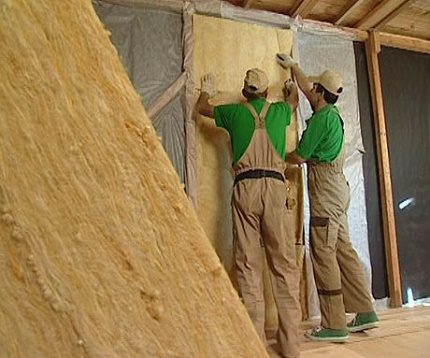
The thermal insulation properties of more rigid and less rigid plates are almost the same. For internal work, less rigid types are used.
More rigid types - relevant for external insulation of facades. Such material is 50 mm, 100 mm thick. Less thick - 50 mm. It is used for internal insulation. Thicker - 100 mm - for external insulation of facades.
The only defect of mineral wool - it must be covered with an additional partition fromdrywall, plastic, platesOSB or other materials. This significantly reduces the living space of the room.
Option # 4 - penoplast
Polyfoam has long been used in the construction industry as a cheap material for sound and waterproofing of premises.
It, in comparison with mineral wool, has better thermal insulation properties, therefore it is possible to mount a thinner plate inside the room. As a result, the living area will practically not decrease.
Along with positive qualities, polystyrene foam has a number of disadvantages:
- The structure of the material is very fragile, so work with it should be done very carefully.
- At the slightest violation of the integrity of the sheetheat loss increase at times.
- Rodents are a thunderstorm of foam boards; they simply adore it. If there is access, the slightest hole, after a certain period of time, the sheets will look like Dutch cheese.
- Highly flammable material - when burning emits caustic, poisonous smoke.
Foam is laid on the surface, using building glue for bonding, generously applied to the entire area of the sheet.
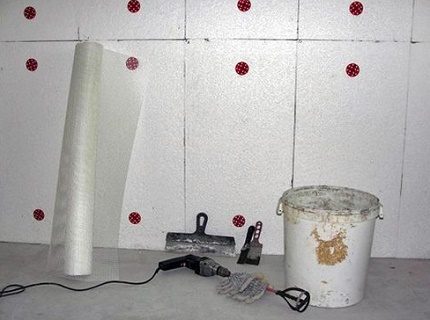
Option # 5 - polystyrene
Polystyrene is a more innovative insulation for walls. Its density is much higher than the density of the foam, which makes its installation much easier.
On the other hand, polystyrene plates do not adhere well to each other, forming many uneven joints that need to be coated with high-quality sealant.
For tightfit sheets and fixing them on the wall, it is recommended to use a solution of a waterproof mixture for bathrooms, bathrooms.
When isolating the premises with polystyrene, it is recommended that you carefully consider sealing the joints between the plates. This will prevent warm air from seeping in between and prevent condensation.
We also recommend reading about the thermal insulation of rooms with varieties of expanded polystyrene:
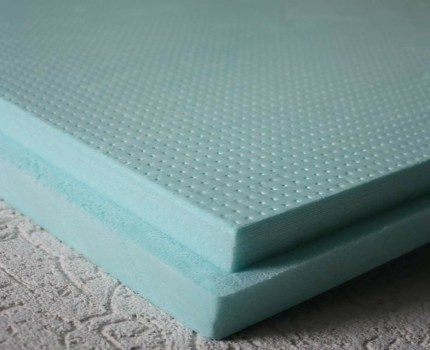
Option # 6 - ptimid wallpapers
One of the most modern environmentally friendly heat-insulating materials that are used to warm the house from the inside is cork wallpaper. They are made from natural ingredients: bark of balsa wood processed, crushed and pressed.
Cork wallpaper is not only a type of insulation, but also a material that is great for decorating and decorating walls. The room, finished with this warm even-looking material, radiates an aura of comfort and coziness.
Characteristics of cork material:
- has antibacterial properties;
- excellent sound insulation;
- heat loss is reduced to zero;
- strength and durability of the coating;
- high antistatic properties;
- non-combustible material;
- environmentally friendly material that does not emit harmful fumes and compounds.
Cork wallpapers are divided into two types: the first - with a natural porous structure, the second - coated with a layer of special varnish. Cork as a heater is available in rolls and plates of various sizes.
It is very simple to install such a heater - for this you need to have rolls of wallpaper, a sharp knife and specialized glue.

Option # 7 - ppolyurethane
Polyurethane foam - materialsquirting on the walls in liquid form.It has excellent waterproof and thermal insulation properties. After hardening, it has a loose structure, so it is almost impossible to plaster the wall.
For effective application, formwork, usually wooden, is made to fill with substancepolyurethane foam. After hardening, construction is requiredhydro and steamprotection from a layer of plastic film, which is mounted on adjacent walls, in the floor and ceiling.
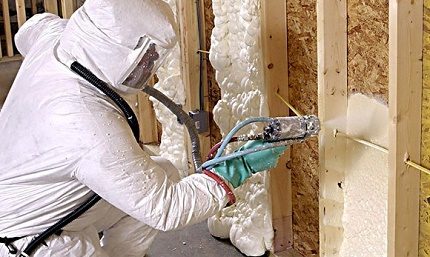
Option # 8 - Liquid Ceramic Insulation
Another innovative way to save heat in the room is liquid ceramic ultra-thin thermal insulation -Gastrointestinal tract. It It has high waterproofing, thermal insulation and soundproofing properties.
Its functionality is in demand in the housing stock in preparation for the heating season.Heat paint Suitable for insulation of ceilings, balconies, interior walls of the room, for facades of cottage and high-rise buildings.
It is in demand for pipe insulation and pipelines, used for sealing heat points: boiler rooms, heating networks and other structures.
Thermal paint Gastrointestinal tract It is used for painting surfaces of various types, for example, concrete, metal, brick, aerated concrete and for other building materials.
Among the advantages, manufacturers note:
- absolute safety for human health;
- reflectivity of the material;
- endurance to low temperatures - maintains temperature minus 60 ° C;
- The material is strong, durable, resistant to sunlight.
In addition, this type of ultra-thin ceramic thermal insulation has a highenergy efficiency. The thickness of the paint on the wall is from 2 to 5 mm.
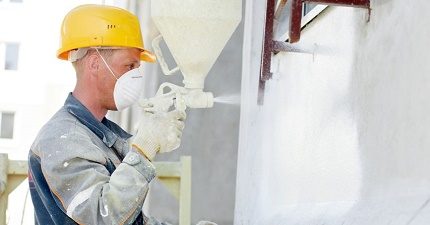
Option # 9 - eKovata
Ecowool -type of new insulation based on cellulosic materials. This material is made from waste paper, antiseptics and a flame retardant.
This insulation is absolutely not fire hazard. In aggressive conditions, cellulose wool is excellent.
To plusesecowool can be considered:
- environmental friendliness;
- safety;
- hypoallergenic;
- lack of condensate formation, respectively of all kinds of decomposition, fungi.
This type of insulation has good soundproof and heat-insulating properties. Protects the building from the cold in the winter and the heat in the summer.
With the invention of cellulose insulation, it became possible to build lightweight structures - the pressure on the foundation due to the ease of insulation material has become much less.
Ecowool they are used for warming any kind of structures: they fill it up in any, the smallest holes, it fills all the space with itself, which facilitates the process of its installation.
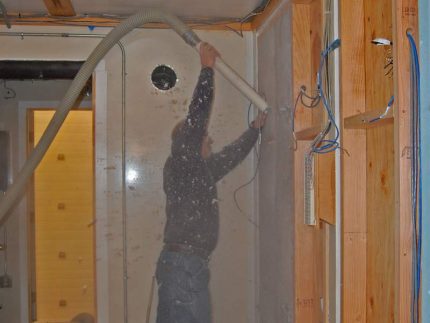
Wool with the help of a unit for blowing under pressure is fed to the surfaces it warms. Before that, it is disheveled in the hopper of the machine for its application. Thanks to this technology, cotton can be fed up to 30 m.
There is another way of layingecowools - This is a raw application method.
For brick or concrete walls, effective insulation is to increase the wall thickness with decorative stone, plaster or brick. The tree is additionally lined and insulated with wooden walls in the room. Such types of insulation are quite expensive and require considerable capital investments.
In some cases, in addition to wall insulation, you should take care of floor insulation and the ceiling in home.
Recommendations for insulation work
Insulation work is best done in the summer, when air humidity is minimal.
Walls for insulation in the room should be perfectly dry. Dry them after additional plastering, finishing work to level the surfaces using building hair dryers and heat guns.
Stages of surface insulation:
- Surface cleaning of decorative elements - wallpaper, paint.
- Wall treatment with antiseptic solutions, surface priming with deep penetration into the layers of plaster.
- In some cases, when installing expanded polystyrene and electric heating elements, the walls are pre-leveled with waterproof plaster for bathrooms.
- Insulation Installation should be carried out according to the instructions prescribed by the manufacturer for this type of material.
- Mounting a protective partition for applying the final finish, or coating the surface with a building mesh, it plastering.
- Creating a single composition with the overall design of the room.
Warming the walls inside the house is one of the most effective ways to protect your home from the penetration of cold and the negative effects of condensate, the main thing is to observe the technological sequence of stages. More details about the technology of warming the home from the inside can be found in this stuff.
Conclusions and useful video on the topic
Modern types of insulation for walls, properties and characteristics:
Tips for wall insulation in the apartment - a review of common mistakes:
Warming the house, made with even the least expensive materials, is not cheap pleasure. Now there are many types of insulation for interior work, which are presented in a wide price range. Therefore, choosing an inexpensive and high-quality material is not difficult.
A warm house in the winter and comfortable coolness in the hot season, as well as a reduction in utility bills, will show that the thermal insulation of the room is made well and of high quality.
And what material did you use to warm the walls of the house? What guided you when choosing and are you satisfied with the result? Please tell about it in the comment block. There you can ask a question about the topic of the article, and we will try to respond to it promptly.

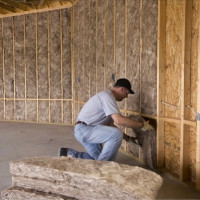 How to insulate a cold apartment from the inside: suitable materials + installation instructions
How to insulate a cold apartment from the inside: suitable materials + installation instructions 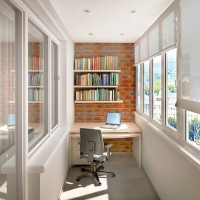 How to insulate a loggia: options + instructions for installing a do-it-yourself warming system from the inside
How to insulate a loggia: options + instructions for installing a do-it-yourself warming system from the inside 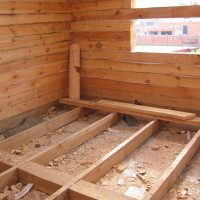 Floor insulation by logs: materials for thermal insulation + insulation schemes
Floor insulation by logs: materials for thermal insulation + insulation schemes 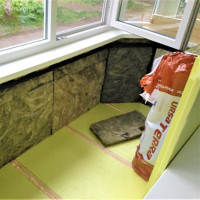 Do-it-yourself warming the balcony: popular options and technologies for warming the balcony from the inside
Do-it-yourself warming the balcony: popular options and technologies for warming the balcony from the inside 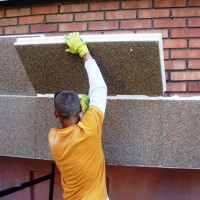 Insulation for walls of the house outside: an overview of options + tips for choosing an external insulation
Insulation for walls of the house outside: an overview of options + tips for choosing an external insulation 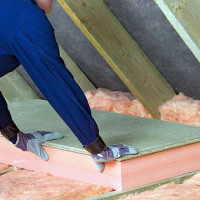 Ceiling insulation in a house with a cold roof: types of effective heaters + installation instructions
Ceiling insulation in a house with a cold roof: types of effective heaters + installation instructions  How much does it cost to connect gas to a private house: the price of organizing gas supply
How much does it cost to connect gas to a private house: the price of organizing gas supply  The best washing machines with dryer: model rating and customer tips
The best washing machines with dryer: model rating and customer tips  What is the color temperature of light and the nuances of choosing the temperature of the lamps to suit your needs
What is the color temperature of light and the nuances of choosing the temperature of the lamps to suit your needs  Replacement of a geyser in an apartment: replacement paperwork + basic norms and requirements
Replacement of a geyser in an apartment: replacement paperwork + basic norms and requirements
I really do not recommend insulating living quarters with glass wool. Yes, it’s cheap, but it can be unhealthy for people living in this house. The fact is that for bonding the fibers in the glass wool, formaldehyde resins are used, which release the harmful substance phenol, and this is a fairly strong poison. If there is no money for expensive heaters, then you can use cheap polystyrene.
It is probably really harmful to insulate glass houses at home, as the man wrote above. I don’t understand why there are so many options for insulation, if it is possible to insulate any premises with eco-cotton. Great stuff. And the ecological situation does not suffer, and protects from the cold in the winter, and from the heat in the summer. Our house was insulated in this way, it turned out super. And the sound insulation is much improved.
To warm the walls of the house from the inside, we highly recommend a new insulation - fireproof airgel thermal insulation. It has a number of unique characteristics.
You would somehow develop your thought and give more details. From your message it is not clear to me who recommends and what unique characteristics this heat-resistant airgel thermal insulation has. While I googled on my own and immediately see that the price of this miracle material is 30 times more expensive than the standard polystyrene foam now. With such a value, he must have truly unique characteristics in order to find his buyer.
As for the insulation of internal walls, my opinion is: now the best option is extruded polystyrene foam. Unlike mineral wool, it has a good density, which simplifies installation, and has effective thermal insulation.